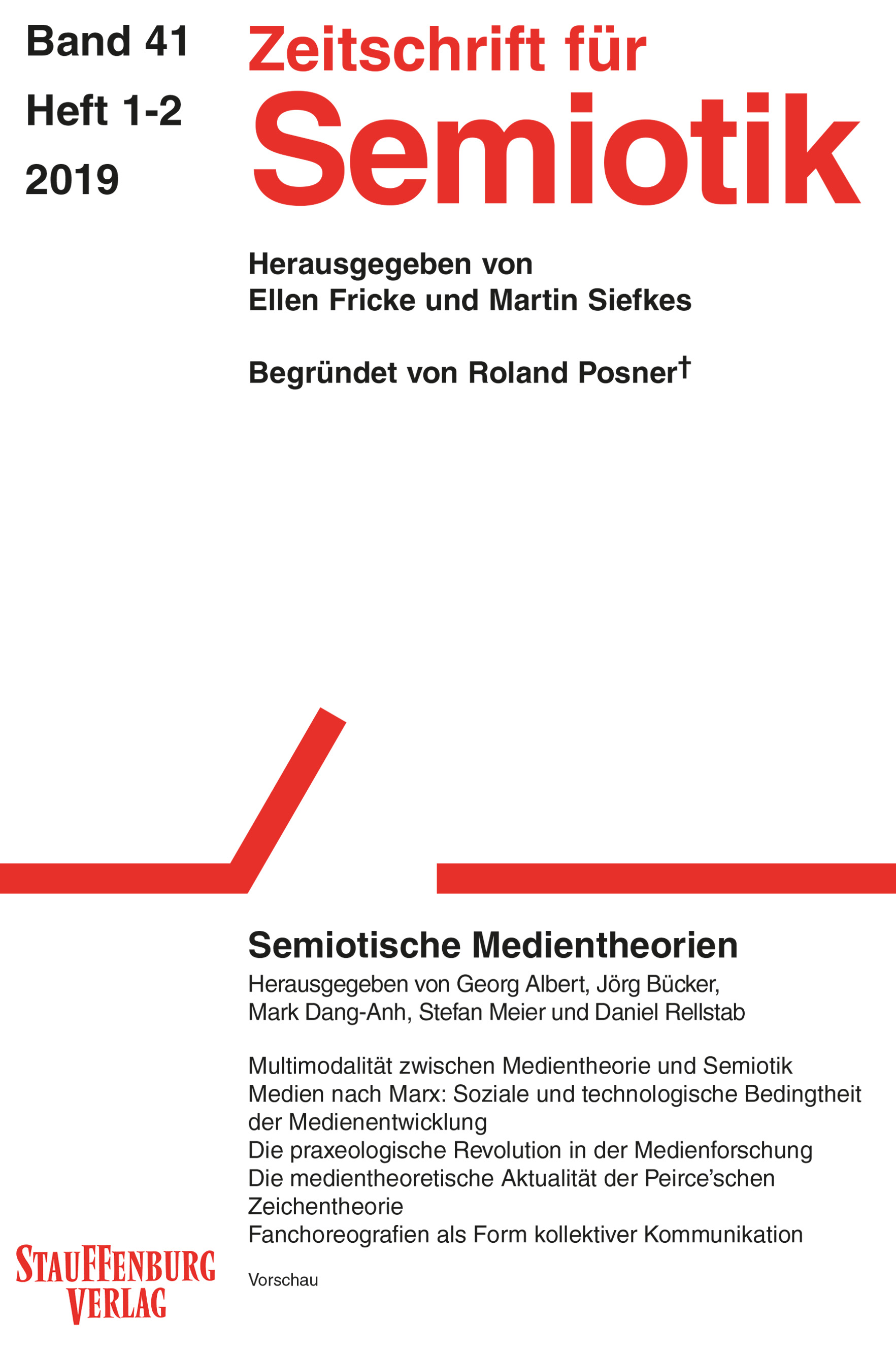Multimodalität im Schnittbereich von Medientheorie und Semiotik
DOI:
https://doi.org/10.14464/zsem.v41i1-2.707Keywords:
multimodality, media theory, genre, materiality, intermediality, communication, semiotic modalityAbstract
Most media theoretical approaches have paid relatively little attention to the needs and requirements of multimodality. At the same time, the most widespread theories of multimodality have just as little dealt with the concept of media. As a consequence, media-theoretical positions on the phenomenon of multimodality as well as multimodal positions on the concept of media are weakened. In this article, we suggest that this situation hinders systematic empirical analysis of complex multimodal artefacts and actions and introduce a concept of media combining both multimodal-semiotic (Bateman 2013, 2016) and media or image theoretical foundations (Sachs-Hombach 2013). This foundational framework builds on our previous empirical analyses of multimodal phenomena in film, comics, graphic design, images and diagrams in order to articulate mutually productive relationships between media, semiotic modes and genres. All three variables are seen as essential for effective analysis: Media bring socio-cultural and institutional aspects into play that establish „biotopes for semiosis“ (after Winkler 2008: 213); semiotic modes trace the shaping of materials so that they can carry communicative actions; while genres allow for descriptions of communicative goals ranging across media and semiotic modes (Bateman 2014a). We argue that a clear separation of the theoretical and analytical responsibilities of media, semiotic modes and genres establishes a number of methodological principles that facilitate the concrete handling of complex multimodal situations as well as supporting more precise analyses of transmedial actions and artefacts (cf. Bateman et al. 2017 or Wildfeuer et al. 2020).
Downloads
Published
Issue
Section
License
Copyright (c) 2024 John A. Bateman, Klaus Sachs-Hombach

This work is licensed under a Creative Commons Attribution 4.0 International License.
Copyright for articles published in this journal is retained by the authors. The content is published under a Creative Commons Licence Attribution 4.0 International (CC BY 4.0). This permits use, distribution, and reproduction in any medium, provided the original work is properly cited, and is otherwise in compliance with the licence.


